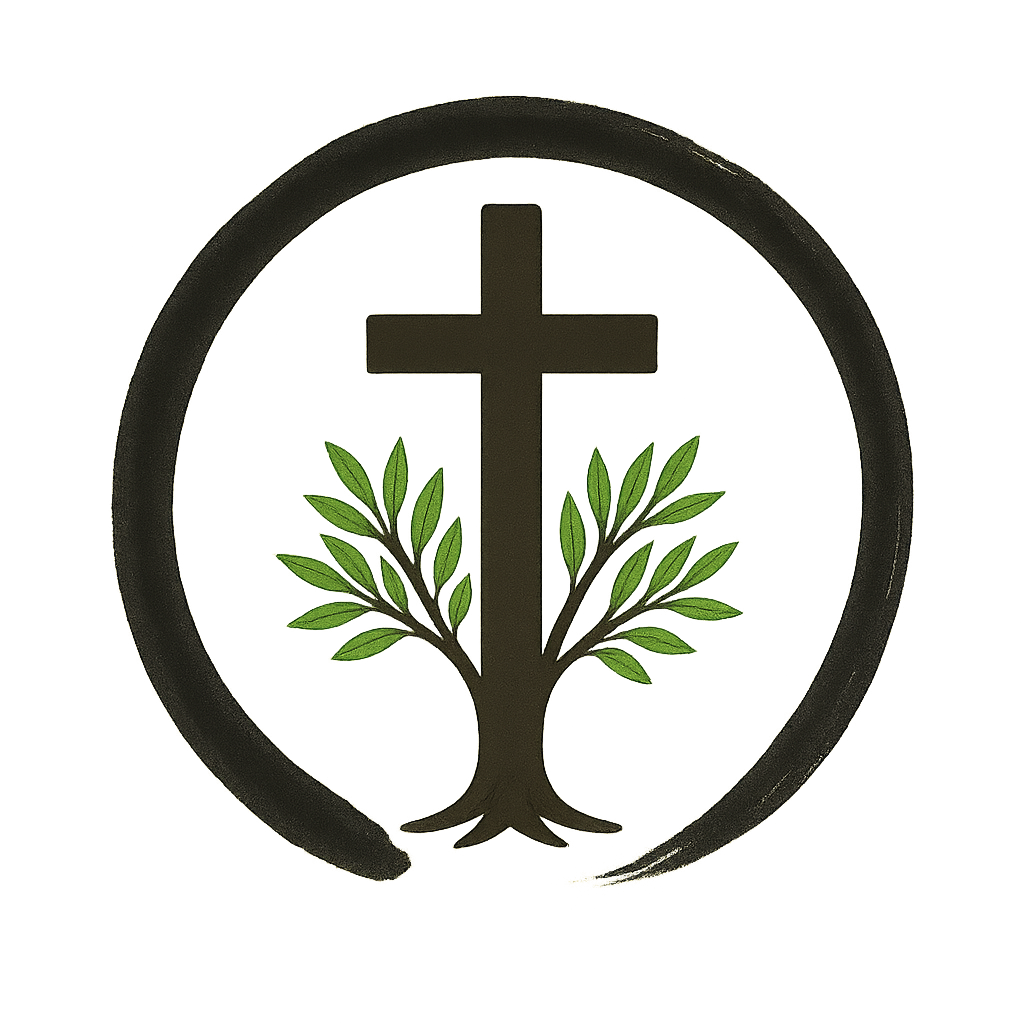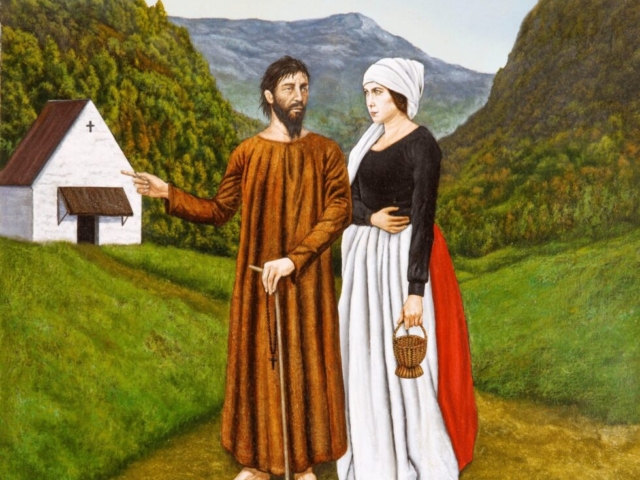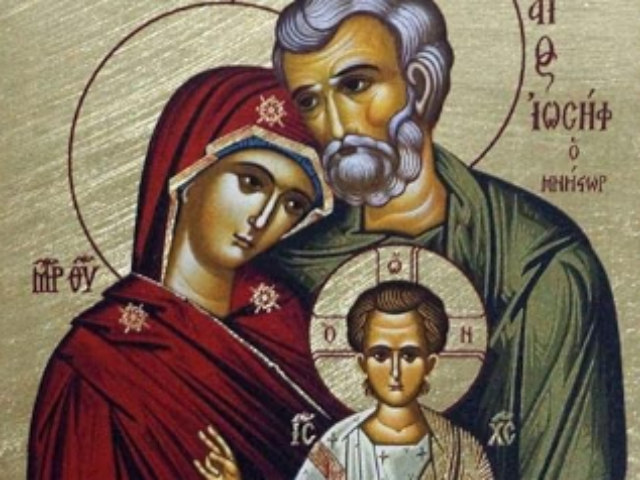Archetypes of man and woman – masculinity and femininity – symbol of love
Man & Woman - Symbol of Love - Archetypes
There are two sexes, male and female, and because they are different, they complement each other. When faced with opposites, the path of love does not lead to conflict and separation (the path of hate), but rather, a greater value emerges from the two opposites of man and woman.
Masculinity (animus) and femininity (anima) are paradoxical, and therefore they aim at a breakthrough from a consciousness limited by the ego form into the non-ego-like self. For only the paradoxical (hetero) can approximately grasp the fullness of the human being, while clarity and consistency are one-sided (homo) and therefore unsuitable for expressing the incomprehensible, the soul.
Archetypes refer to the basic dynamic structures of human thought and action patterns assumed to belong to the collective unconscious. They are defined as psychological or structural dominants that, as unconscious factors, influence human behavior and consciousness. An archetype as such is intangible and unconscious, but its effect can be experienced symbolically, for example in religion, dreams, visions, artistic works, fairy tales and myths.
When love ends, power, violence, and terror begin! As long as we don't honestly recognize ourselves, we project our problems and our dark side onto others (scapegoats). Self-awareness is painful.
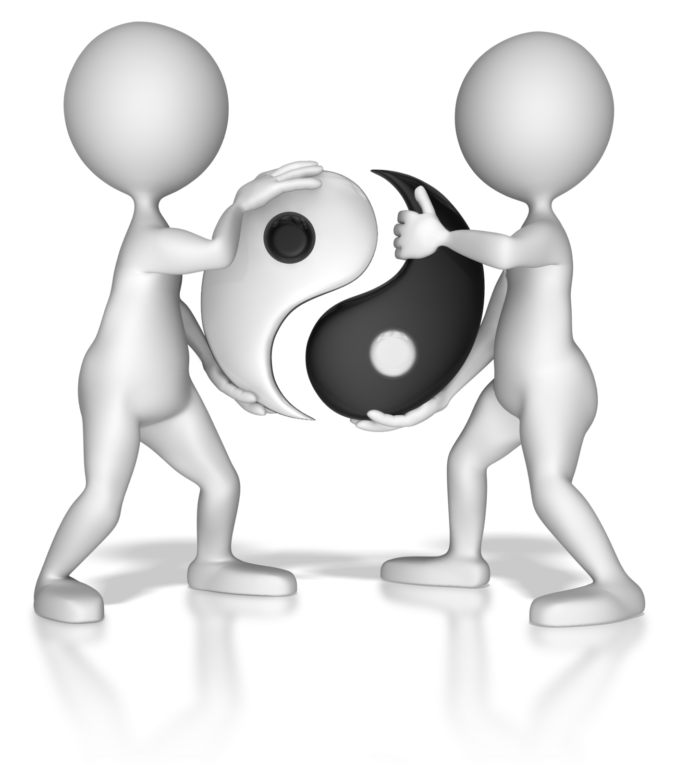
Man & Woman - Masculinity & Femininity
The difference between man and woman is that man perceives things and woman perceives people.
For man, his spirit is sacred and vulnerable, and for woman, her body is sacred and vulnerable.
A sign of inner integration is that the masculine no longer needs to devalue the feminine. And the feminine no longer needs to fight the masculine.
Only with a strong father can we separate ourselves from the mother and become free. If we succumb to the misconceptions of man and woman, we find ourselves in a difficult situation. Man and woman help each other see each other's individual weaknesses; they have each other's backing. Because we are opposites, we can help each other.
Courage for the Wholeness of the Soul
Only through the love of the Father can we summon the courage for the completeness of the soul and accept our own shadow. If we accept this voluntary sacrifice, life and death will take on a meditative and religious character. The center of our own life becomes increasingly conscious and attentive. However, in our quest for completeness, we often stray into pursuing the goal of perfection. Perfection is the tyranny of the mind, which should be avoided at all costs. In this respect, the feminine (anima, chaos) helps the mind to constantly practice humility.
The Soul - Anima & Animus
The animus and anima are the two most important archetypes, i.e., intangible structures of the possibilities of human imagination and emotionality, inherent in the collective unconscious and independent of individual experience. The anima and animus manifest themselves in moods and whims, enthusiasm and infatuation, in dreams and myths. The (internal or external) images of the anima and animus in the individual can be described as "personifications of a feminine nature in the unconscious of men and a masculine nature in the unconscious of women."
The animus and anima, like all archetypes, inherently develop favorable and unfavorable, light and dark, good and evil effects.
The Soul
The realms of the anima and animus were understood as parts of the soul. Soul means the inner, unconscious personality, a "delimited functional complex," while the psyche is understood as the "totality of all psychic processes, both conscious and unconscious."
Sexuality
The unconscious usually behaves complementarily to the conscious, and this "complementarity of the soul also affects the sexual character," which is why the anima and animus are opposite sexes in the individual. This certain balancing of the masculine with the feminine and (vice versa) in the soul also means that "humanity, since time immemorial, has always expressed in its myths the idea of the coexistence of a masculine and feminine in the same body," so that, as in the image of the hermaphroditic god, the other sex is always present in the human being.
Masculinity - Matter & Spirit - Goals
The animus is the masculine manifestation and the masculine functional area in the woman's soul. The animus is a kind of precipitate of all the experiences of the female ancestors with the man – and not only that: it is also a generative, creative being, a generative word. Like the anima, the animus is a bridge to the unconscious and can also personify it, for example, in dreams. Just as the anima can be a spiritual guide to a man, the animus is also a spiritual guide, a mediator between the conscious and unconscious, and a personification of the unconscious.
In interpersonal relationships, however, these archetypes often initially lead to complications: "When animus and anima meet, the animus unsheathes the sword of its power, and the anima injects the poison of its deception and seduction," whereby even this unfortunate beginning can result in infatuation. In extroverted projection, the animus is often problematic because it "doesn't belong to the conscious relationship function, but rather should facilitate the relationship with the unconscious," turning inward.
However, since the animus and anima are also involved in every love relationship, it is particularly important not to identify with the mutual projections; only then is a conscious confrontation with these inner forces possible.
Archetype
Just as the anima is rooted in the experience of the mother, so too is the animus in the experience of the father: "Just as the anima corresponds to the maternal Eros, so the animus corresponds to the paternal Logos." The animus is something like a collection of fathers and other authorities who, ex cathedra, make unassailable, 'rational' judgments. The animus shows an affinity with the archetype of the hero (heroic figure, heroic youth), who can provide strength and guidance for great achievements. In its clearly negative aspect, it resembles a sorcerer, a negative father figure, or a male demon.
As a negative effect, the animus can even act like a death demon, distancing a woman from all real relationships and drawing her away from this world. Just like any archetype, the animus can have both positive and negative effects. In its positive aspect, it can be a motivating and mediating factor for intellectual pursuits and spiritual development in relation to the unconscious. The animus appears as a male figure in women's dreams, for example, as a mysterious and fascinating lover, a father figure, a pastor, a professor, a prince, a magician, etc. In fairy tales, the animus manifests itself as a prince, King Thrushbeard, or Bluebeard.
Stages of Development
Just as the anima produces whims, the animus produces opinions. The animus's opinions very often take the form of solid convictions that are not easily shaken, or of principles that seem inviolably valid, or embody a devil of opinion in all possible forms. In such cases, it is important to analyze the unconscious assumptions, i.e., the animus behind them. Commonplaces that are unquestioningly adopted from father figures (e.g., "There's nothing you can do about it") are indicators of an unreflected animus. Of course, the animus is projected just as frequently as the anima.
Men suitable for projection are either living copies of God or unrecognized innovators. Women project various ideals of masculinity onto men. Animus possession can also lead women to sacrifice their lives for the most insane ideas (just as men destroy their families or start wars for some emotional impulses). By no means are all contents of the anima and animus projected. Many of them appear spontaneously in dreams, etc., and even more can be made conscious through so-called active imagination.
However, while many of these contents can be made conscious, the archetypes themselves can never be made conscious. Marie-Louise von Franz described the typical stages of development of the animus in women as:
- The entirely physical man (e.g., Tarzan or a sports hero)
- The romantic man (e.g., a musician or poet)
- The man of action (e.g., a war hero)
- The "bearer of the word" (e.g., a great political orator)
- The wise guide to spiritual truth (e.g., various religious leaders)
What do I live for and what do I give my mind to? What do I really want? Where and with whom is a man's spirit safe?
Animus - Reason
-
Factual
-
Spiritual / Mental
- Deductive
- Rational
- Consciousness
- Public
- Visual
- Hierarchical
- Risk
- Loner
- Compassion
- Education
- Long-Term
Protect the woman's body and help her see the bigger picture!
Blind Spot
Because one is fixated on the matter and the spirit, one often overlooks the person and the body! Perfectionistic. It's also about integrating the feminine soul parts (anima) within oneself. If a man represses the anima, he becomes capricious and controlled by his moods.
Primal Fear
Impotence & Castration (Spiritual Rape)
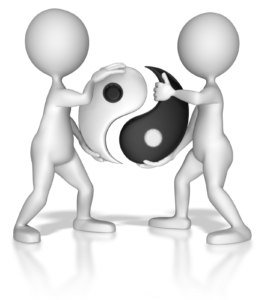

Anima - Person & Body - Maximize Pleasure, Minimize Displeasure
The anima is the feminine manifestation and the feminine functional area in the male soul, and at the same time, his bridge to the unconscious as a whole. If a man loses contact with his anima, he thereby loses "all connection with the compensating unconscious." In such a case, the unconscious tends to produce emotions of a disproportionate nature, such as irritability, lack of control, arrogance, feelings of inferiority, moodiness, depression, outbursts of anger, and the like. Who do I live for and to whom do I give my body? What do I really need? The gut knows no morals and follows the principle of maximizing pleasure and minimizing displeasure. The opposites at the same time. Where and with whom is a woman's body safe? With her father, her husband, children, the elderly, the sick, and the disabled.
Archetype
Every man carries the image of a woman within him from time immemorial, not the image of this particular woman, but of a particular woman. This image is essentially an unconscious genetic material, originating from primordial times and ingrained in the living system. The anima is also based in the "mother, old and young, Demeter and Persephone, and the son is husband and sleeping infant in one. Not only as an image of the mother and the "mother-beloved," "but also of the daughter, the sister, and the beloved, the heavenly goddess and the chthonic Baubo, omnipresent everywhere as an ageless image,"
C.G. Jung described the anima as the archetype of the feminine. Wherever she appears—in dreams, visions, and fantasies—she appears personified. The projection of the anima onto a real woman often becomes a disruptive factor in relationships because the man then expects a woman to be the embodiment of an inner image of the feminine (which is why men sometimes consider a woman to be "my goddess"). Even the beautiful "nymphs and dryads" are "anima projections" when it comes to male statements.
Stages of Development
The anima is a bipolar figure and can therefore appear sometimes positive, sometimes negative; sometimes old, sometimes young; sometimes mother, sometimes girl; sometimes benevolent fairy, sometimes witch; sometimes saint, sometimes whore. Marie-Louise von Franz described the following typical "stages of development" of the anima in men:
- The "primitive," sensually attractive woman (Eve)
- The romanticized beauty (Helena)
- The spiritualized feminine Eros (Virgin Mary and Mother of God)
- Feminine spirit and wisdom (Sophia).
The role of the anima as a guide inward, step by step ever further through the unconscious realms, is particularly clearly demonstrated by Beatrice in Dante's Divine Comedy. In boys, the anima initially appears in the form of the mother archetype. The separation of the anima from the mother image then enables the man to have relationships outside the son-mother model and represents a central developmental step.
The Church, based on an older tradition, translates anima as soul and life. In mystical experience, the anima is the virgin who woos the spirit; in fairy tales, it is the princess or Cinderella who is married to the king or prince (union of opposites – chemical marriage).
Femininity - Gut
-
Personal
-
Physical
- Inductive
- Emotional
- Unconscious
- Private
- Tactile
- Heterarchical
- Security
- Consideration
- Social
- Pity
- Care
- Short-term
Protect the man's spirit and help him see the person!
Blind Spot
Because one is fixated on the person and the body, one often overlooks the matter (context) and the spirit! Narcissistic. Just because the majority does it doesn't mean it's right. It's also about integrating the male soul parts (animus) within oneself. When a woman represses the animus, it often manifests itself in opinions that can no longer be questioned.
Primal Fear
Being beaten to death by a man - Physical Rape

Persona - Light & Shadow
A persona is the outwardly displayed attitude of a person, which serves their social adaptation and is sometimes even identical to their self-image.
However, as its name suggests, a persona is merely a mask of the collective psyche, a mask that feigns individuality, making others and oneself believe one is an individual, while in fact it is only a role played by the collective psyche. It is a compromise between the individual and society regarding what one appears to be. (C.G. Jung)
The term thus refers to the part of the ego that ensures the individual's "normal," socially acceptable behavior toward their environment – and insofar as the persona likes to pretend to be "the ego," it can also be interpreted as a "false ego." The characteristics of the persona are therefore acquired primarily through adaptation to or adoption of socially (or subculturally) desired ideas (collective unconscious).
Loss of Individuality
Adaptation, however, often occurs at the expense of individuality. The danger of overadapting to social circumstances puts the individual at risk of conflict with the unconscious, individual part of their psyche, whose socially disadvantageous areas are often kept in the "shadow" of relative unconsciousness. Thus, the ego consciousness typically stands between the poles of its "bright" persona and its "dark" shadow. The persona is a kind of clothing of the ego, which both protects the individuality hidden behind it and provides a starting point for normal (situationally conventional) communication.
Opportunities and Dangers
Jung described the opportunities and dangers of the psychic process when the conventional persona is dismantled by content emerging from the unconscious. The "unleashing of involuntary fantasy" brings to light a mixture of individual and collective unconscious content. This can either bring about a healing personality change or the complete absorption of people into mass movements.
Protective Function
The persona, viewed positively, has a dual protective function:
- It can protect a sensitive inner life from encroachment and devaluation by others.
- And it can protect other people from dangers (e.g., sexual or political violence) by suppressing potential perpetrators' destructive impulses in order to preserve the persona (in this case, for example, reputation and social standing).
Conversely, in a positive sense, abandoning a socially defined persona can help a person constructively realize their inner life.
The Path of Love and Goodness - Path of the Heart and Conscience - Free Will
The path of love (path of the heart) leads to greater value through the two opposites of man and woman. Free will lies in the heart, together with conscience (morality), and can thus make the right decisions for each situation, depending on the gut and the head.

Femininity - Gut Feelings - Avoiding Displeasure - Maximizing Pleasure
Emotions, feelings, urges, avoiding displeasure, maximizing pleasure, fear-driven, greed, lack of morals, short-term: People who only follow their feelings always go astray. The gut isn't interested in truth, goodness, logic, moderation, or morality. But the gut is useful, because maximizing pleasure means the gut draws us to where something fundamentally good is for us. Avoiding displeasure is the second important principle, because the gut is frightened by what isn't good for us. The strongest form of avoiding displeasure is fear. Gut feelings often contradict each other simultaneously, and it only thinks in the short term. The gut seeks short-term gratification.
Masculinity - Head - Reason - Goal-Oriented
Reason is the ability to analyze gut feelings and the world. Reason thinks long-term. In order to achieve a goal later, I have to do something now that I don't enjoy. A goal-oriented action where the head wins over the gut. Because the gut can be wrong, a second authority is needed: reason. Reason is the exact opposite of gut feelings. However, reason has one major disadvantage: it reduces reality to a narrow range. Reason is very limited because we depend on external circumstances. However, we can choose what and who we allow to influence us.
I choose what influences me! The second weakness of reason is that we can only perceive what we want to perceive!

Heart - Human Decision-Making Center - Free Will
Stomach and head, and in the center is the heart. The heart is the human decision-making center. The heart listens to what the gut says and then asks the head what it thinks. And then the heart must make a decision. So the heart has these two advisors: the gut and the head. The heart now asks itself whether it is good or bad!
Women can't see the forest for the trees, and men can't see trees!
The heart asks itself whether this decision corresponds to my values:
- And for that, free will is needed, otherwise the heart couldn't make a decision.
- Values, are more important the closer they are to the true, the good, and the beautiful.
- Conscience, examines my actions and compares them with my values.
- Virtues! Values when they are slowly internalized. The ease in doing good. Virtues become a gut feeling. That is; Telling the truth creates pleasure, and lying creates pain.
- The inner sanctuary! Religion, being part of a greater whole, i.e., a sense that there is something greater than myself! Service to a cause, devotion!
He becomes completely himself, himself, when he overlooks and forgets himself! (Viktor Frankl)
The heart must be open to the truth. But it can also impose restrictions on thinking on itself, and then one avoids guilt and falls back into the gut (avoiding pain).
- Hardened Heart
- Weak Heart
- Strong heart
Devotion brings happiness, and love hurts. Performance of the heart:
- Gratitude
- Serenity
- Humility, the ability to see oneself as it corresponds to reality.
- Forgiveness
- Repentance
- Mercy & Kindness
- Service
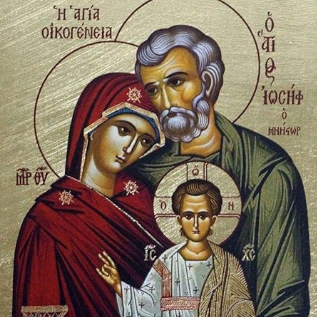
Family as a Role Model - The holier the marriage and family, the holier the people!
There the seeds are sown that will later sprout and become the blessing or curse of a nation. There unbridled desire is channeled into the divinely ordained path, a test of love and fidelity until death. This love and fidelity must be as great as Christ loves the Church and never abandons it.
Healthy Family = Healthy Individuals = Healthy Society = Healthy State
May God grant our people good fathers and mothers, and through them, holy, faithful, and valiant families! They are the guarantee of a better future and the strongest bastion of our nation's spiritual health. The most successful and therefore the happiest, even today, are those parents and educators who truly come to their children from God and with the splendor of divine mission. The child doesn't know what is right, but we should know; that is why God placed unreasonable children in the hands of reasonable parents.
Holy Family - Swiss Mystic Brother Klaus & Dorothea
The family of Brother Klaus and his wife Dorothea is a true role model. The couple helped each other to heaven because they both understood the divine order and the healthy needs of men and women. The couple supported each other. If the hierarchy is not understood and practiced, the family cannot function.
- God
- Husband / Wife
- Children
- .... (nothing for a long time)
- .....
- Parents / In-laws
- Relatives / Friends

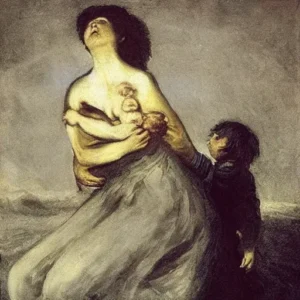
The Intelligent Pagan - Fatherless Society
The tragedy of our time is that we live in a fatherless society. And so many people no longer believe in symbolic language. The intelligent pagan is a mama's boy, wandering aimlessly in a fatherless society. He knows a lot, but understands nothing and falls prey to the tyranny (self-absorption) of the body (narcissism) or the mind (perfectionism). He identifies only with the body or the mind and is thus incapable of love because he lacks the greater whole. The intelligent pagan worships the ideology of equality and ignorance. He is emotionless, indifferent, and cold. He lacks agape, divine, giving love, devotion, and service.
In a society without initiation rites for men, men remain dependent on their mothers. In a sociological matriarchy, women are happy fat whores who boss men around. And the men are thin, submissive, and nervous mama's boys who work the fields and do the work for the women. Wealth, instinctual life, sexuality, and earthly happiness flourish. But there are no intellectual achievements at all; it's a world of utter stupidity without religion and meaning. (Marie-Louise von Franz)
